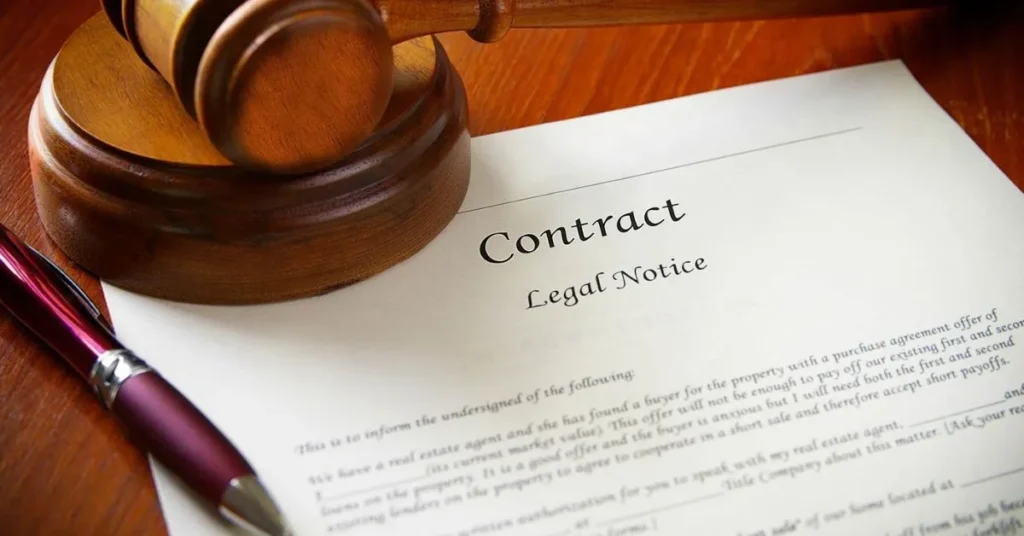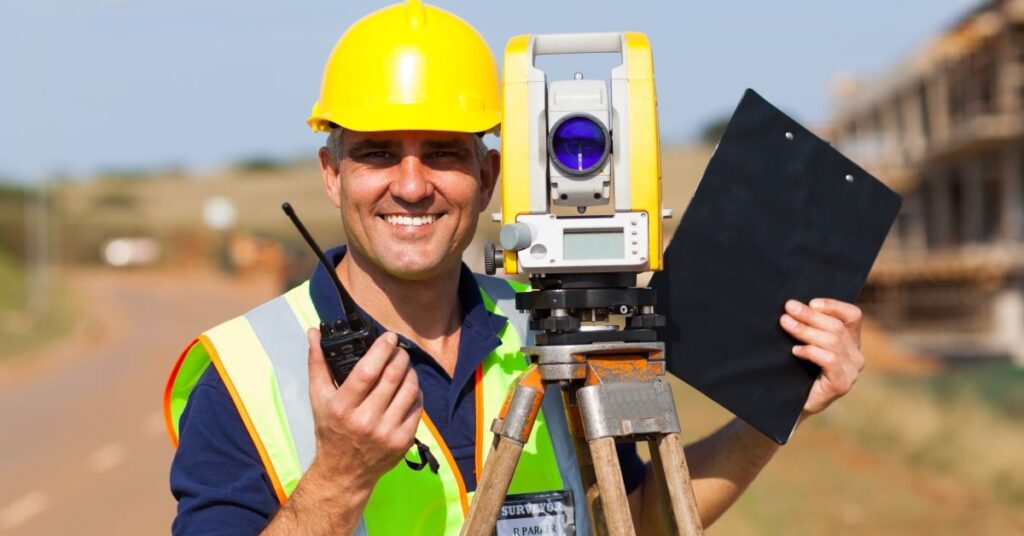Proving that a house is on your property involves a few essential steps. First, you need to obtain a copy of your property deed. The deed is a legal document that outlines the boundaries of your property. You can get this from your county recorder’s office or online.
Next, hire a licensed surveyor to conduct a property survey. A surveyor will measure and map out your property lines. This will provide a clear and accurate picture of your property boundaries. Having an updated survey can help resolve any disputes or questions about where your property begins and ends.
Use boundary markers to physically mark the edges of your property. These markers can be stakes, fences, or other visible indicators. Keeping these markers maintained helps prevent any confusion. Here we’ll discuss whole information about how can you prove that a house is ono your property.
Understanding Property Boundaries
Property boundaries define the edges of your land and are crucial for avoiding disputes. They are typically marked by physical indicators and documented in legal deeds and surveys.
What are Property Boundaries?
Property boundaries define the exact edges of your land. They are marked by physical signs and recorded in legal documents. Property boundaries are crucial in real estate to prevent disputes. Clear boundaries ensure everyone knows their property limits.
Common Property Boundary Issues
Common property boundary issues include encroachments, where a neighbor’s structure crosses into your land, and easements, which grant others access to your property. Disputes often arise over unclear boundaries, leading to conflicts and potential legal action.
Legal Documentation
Legal documentation, like property deeds and title insurance, proves property ownership and boundaries. These documents are essential for resolving disputes and confirming legal rights.

Property Deeds
Property deeds are legal documents that outline the ownership and boundaries of a property. They are crucial for proving who owns the land. You can obtain a copy of your deed from the county recorder’s office.
Deeds include important details like the property description and any previous transfers of ownership. Reviewing your deed ensures you understand your property lines. Keep your deed in a safe place for easy access when needed.
Title Insurance
Title insurance is a policy that protects property owners and lenders from financial loss due to defects in the property title. It covers issues like liens, encumbrances, or errors in public records.
Title insurance verifies that your property title is clear and legally yours. It provides assurance that there are no hidden claims or disputes over ownership. This protection is essential when buying or selling a property.
Steps to Claim Title Insurance Benefits:
Identify the Issue: Determine the specific problem affecting your property title.
Contact the Insurer: Notify your title insurance company about the issue.
Submit Documentation: Provide necessary documents, such as the policy and any evidence of the defect.
Investigation: The insurance company will investigate the claim.
Resolution: The insurer will either resolve the issue or compensate you for any losses incurred.
Surveyor Reports
A property survey is a detailed map or drawing that outlines the boundaries, dimensions, and features of a piece of land. It is conducted by a licensed surveyor to determine the exact location of property lines and any improvements.
Types of Property Surveys:
- Boundary Survey: Defines the property lines and corners of the land.
- ALTA/NSPS Survey: A detailed survey meeting specific standards typically required for commercial transactions.
- Topographic Survey: Shows the natural and man-made features on the property, useful for development or construction.
Practical Steps to Prove Property Boundaries
Practical steps to prove property boundaries include hiring a licensed surveyor to conduct a property survey. These actions help ensure clarity and prevent disputes over property lines.
Hiring a Licensed Surveyor

Hiring a licensed surveyor is essential for anyone involved in land development or property transactions. A licensed surveyor provides accurate measurements and maps of land, ensuring legal boundaries are clearly defined.
Importance:
- Ensures accurate property boundaries.
- Helps avoid legal disputes over land ownership.
- Necessary for construction and development projects.
- Provides reliable documentation for property sales and purchases.
Using Boundary Markers
Using boundary markers is crucial for identifying the precise limits of a property. These markers help prevent disputes by clearly showing where one property ends and another begins. They are often used during construction projects to ensure building within legal boundaries. Properly placed markers are essential for accurate land surveys and property records.
Accessing Public Records
- Public records are available to everyone.
- They include information like property deeds and court records.
- Accessing these records can be done online or in person.
- They help in legal research and verifying property details.
Resolving Property Boundary Disputes
Communicating with Neighbour’s

Communicating with neighbours builds strong relationships and fosters a friendly community. Share your contact information, greet them regularly, and discuss any concerns openly. Invite them to community events and offer help when needed. This active communication helps maintain a peaceful and supportive neighbourhood.
Mediation and Arbitration
Mediation and arbitration resolve disputes without going to court. In mediation, a neutral mediator helps both parties reach a mutual agreement. In arbitration, an arbitrator listens to both sides and makes a binding decision. Both methods save time and reduce legal costs. They also provide more privacy than court proceedings.
Legal Action
When negotiations fail to resolve a boundary dispute. If a neighbor builds on your property without permission. When property deeds or surveys are conflicting. If you need to protect your property rights legally.
Steps Involved in a Property Boundary Lawsuit:
- Consult with a real estate attorney.
- Gather all relevant documents and evidence.
- File a complaint in the appropriate court.
- Attend court hearings and provide testimony.
- Await the court’s decision or settlement.
Preventive Measures
Preventive measures are proactive steps taken to avoid potential problems or risks. They include regular maintenance, proper planning, and using safety protocols to ensure smooth and safe operations. They help in minimizing the likelihood of issues and ensuring a secure and efficient environment.
Related Content: HOW TO GET COMPS FOR COMMERCIAL REAL ESTATE
Regularly Updating Surveys
Regular surveys ensure accurate and up-to-date information about property boundaries. They help in identifying any changes or discrepancies, preventing legal disputes and ensuring compliance with zoning laws.

It’s recommended to update surveys every 5-10 years or whenever significant changes occur, such as property transactions, construction projects, or changes in land use.
Maintaining Clear Documentation
Maintaining clear documentation helps keep records organized and accessible. It ensures that all important information is easy to find and understand. This practice reduces confusion and prevents mistakes.
By keeping detailed records, you can track progress and make informed decisions. Clear documentation also aids in compliance with regulations and standards. It supports effective communication and collaboration among team members.
Establishing Good Neighbour Relationships
- Introduce yourself to your neighbours.
- Communicate openly and respectfully.
- Help each other with small tasks.
- Respect property boundaries and privacy.
- Resolve conflicts calmly and fairly.
Frequently Asked Questions
How can I prove that a house is on my property?
Obtain your property deed, hire a licensed surveyor for a property survey, and use boundary markers.
What are property boundaries and why are they important?
Property boundaries define land edges and prevent disputes, documented in legal deeds and surveys.
How can I access public records related to my property?
Access online or in person for property deeds and court records.
What should I do if I have a dispute over property boundaries?
Communicate with neighbours, consider mediation or legal action.
Why is it important to establish good relationships with neighbours?
Builds community, prevents conflicts over property boundaries.
Final Thoughts
Proving that a house is on your property requires thorough documentation and clear communication. Start by obtaining your property deed from the county recorder’s office to establish legal ownership boundaries. Hiring a licensed surveyor to conduct a property survey ensures precise mapping of your property lines.
Maintaining physical markers such as fences or boundary stakes further reinforces property boundaries visibly. These proactive steps not only prevent potential disputes but also safeguard your property rights, ensuring clarity and legal certainty in property ownership matters.

Paul Mitchell, our website’s author, leverages 6 years of business expertise to provide insightful content. His wealth of experience enriches our platform, offering valuable insights for our readers.











